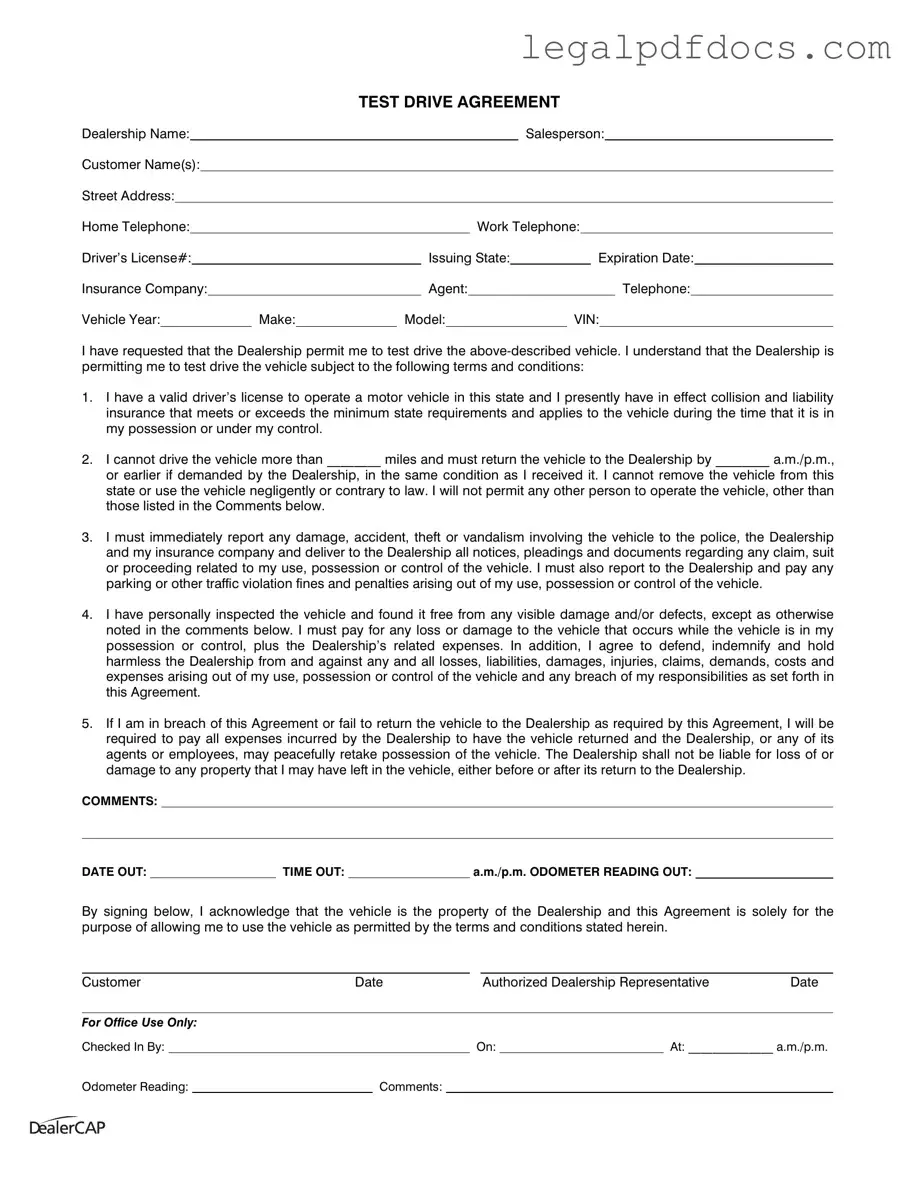The Test Drive form is an essential document for anyone looking to take a vehicle for a spin at a dealership. This form captures important details such as the dealership's name, the salesperson's information, and the customer's personal data, including their address and phone numbers. It also requires the customer to provide their driver's license number and insurance information, ensuring they meet the necessary legal requirements. Key terms and conditions are outlined, emphasizing the responsibilities of the customer during the test drive. For example, customers must return the vehicle within a specified time and mileage limit, report any incidents immediately, and confirm that the vehicle is free from visible damage before driving. The form also includes a section for comments and notes, allowing customers to document any existing issues with the vehicle. By signing the Test Drive form, customers acknowledge the dealership's ownership of the vehicle and agree to the outlined terms, providing both parties with a clear understanding of their rights and obligations. This agreement is crucial for protecting the interests of both the dealership and the customer during the test drive experience.
